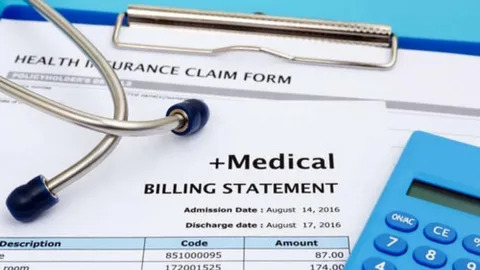
Medical Billing for Beginners
The Ultimate Medical Billing Guide for Beginners
What Is Medical Billing & Why It (Actually) Matters
Think of medical billing as the back-of-the-scenes hero in healthcare. It’s how doctors and hospitals get paid. When a patient gets a remedy, everything—from a checkup to a major surgical procedure—desires to be transformed right into a declaration, submitted to coverage, and followed up till payment is acquired.
Without medical billing, providers wouldn’t get reimbursed, and the healthcare system would collapse financially. Understanding the medical billing process is the first step to becoming successful in this in-demand field.
Who Does It & What Tools They Use
Roles in the Billing World
-
Medical Biller—Handles claims, payments, and follow-ups.
-
Medical Coder—Translates diagnoses into codes.
Whether you're focusing on medical billing and coding or just one, knowing both is a major plus.
Must-Know Terms
-
CPT/HCPCS Codes—Used for services.
-
ICD-10 Codes—Used for diagnoses.
-
EOB—Insurance's breakdown of what’s paid.
-
Claim Denial—When payment is rejected.
-
Clearinghouse—Tech middleman for electronic claims.
Mastering these terms is part of the medical billing basics every beginner needs.
The Medical Billing Workflow—Step-by-Step
Patient Check-In & Info Collection
Every step-by-step medical billing process starts here. Gather accurate patient details—like name, DOB, and insurance info. If this goes wrong, the entire claim can be rejected later.
Insurance Verification
Before the provider treats the patient, it’s your job to verify coverage. Checking eligibility avoids rejections later and ensures that medical billing steps for beginners are clean and accurate.
Accurate Medical Coding
If you're following a medical billing and coding guide, this is where coding happens. Using ICD-10 and CPT codes, everything is documented properly to justify the treatment and its cost.
Charge Entry & Claim Submission
Charges are added to the billing system, and claims are submitted electronically. Most medical billing tutorials teach you to use platforms like Kareo, AdvancedMD, or PracticeSuite to submit clean claims.
Payment Posting & Follow-Up
Once insurance responds, you’ll post payments and handle any denials or underpayments. Being detail-oriented helps here—this is where a good biller really shines.
4. Learn Medical Billing Online
Top Courses & Platforms
You can easily learn medical billing online with beginner-friendly platforms like:
-
AAPC—Offers the respected Certified Professional Biller (CPB) course.
-
AHIMA—Focuses on comprehensive medical billing training online.
-
Coursera/Udemy—Great for short, budget courses on medical billing basics.
Certifications That Matter
Here are the most recognized credentials:
-
CPB—Medical billing course for beginners.
-
CBCS—a top choice for new billers.
-
CMRS—For experienced professionals.
A certified biller has a better chance to land jobs and even work remotely.
Billing vs. Coding—What’s the Difference?
|
Role |
Focus |
Importance |
|
Medical Coding |
Converts notes into codes (ICD/CPT) |
Essential for documentation and compliance |
|
Medical Billing |
Sends claims and follows payments |
Key to revenue cycle and provider payments |
Following a complete medical billing and coding guide will help you master both.
Common Roadblocks & How to Overcome Them
-
Claim Denials—Often due to coding errors or missing information.
-
Data Entry Mistakes— One wrong digit, and the whole claim fails.
-
Compliance Violations—Make sure you follow HIPAA standards in all medical billing training online courses.
Many medical billing tips for beginners focus on how to spot and avoid these common pitfalls.
Pro Tips for Beginner Billers
-
Stick to a clear medical billing process explained format.
-
Learn with practice tools and medical billing tutorials.
-
Don’t skip insurance verification.
-
Always double-check codes.
-
Follow industry blogs for updates.
These are top-level medical billing tips for beginners you can’t afford to ignore.
Picking the Right Software
Popular tools include
-
Kareo
-
AdvancedMD
-
AthenaCollector
-
PracticeSuite
If you're just starting and wondering how to start medical billing, begin with free demos or training software to get a feel for real-life work.
Future of Medical Billing
Trends to watch if you want to grow in your career:
-
Automation in claim submission
-
AI for denial prediction
-
Telehealth reimbursement
-
Blockchain for secure patient data
All these make the career dynamic and high-demand.
How to Start a Career in Medical Billing
If you're wondering how to do medical billing as a full-time career:
-
Get certified through a medical billing course for beginners.
-
Build your resume with real claim examples.
-
Apply for access-stage or faraway roles.
-
Join LinkedIn groups or Facebook boards for process leads.
Conclusion
Whether you're present day or upskilling, this medical billing guide has the whole thing to get you started. With a clean understanding of the medical billing process, the proper education, and the excellent equipment, you could release a hit career on this growing subject.
FAQs
Can I learn medical billing at home?
Yes, you can learn medical billing online through authorized publications that educate on both concept and real-world practice.
How long does it take to learn?
Most medical billing training online programs take 3 to 6 months for beginners.
Do I need experience?
No, start with a medical billing course for beginners and build experience through practice modules.
What jobs can I get?
You can work in hospitals, private practices, or remotely for billing companies.
Is certification required?
Not always, but highly recommended. A medical billing and coding guide with certification paths improves your job chances.





